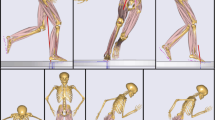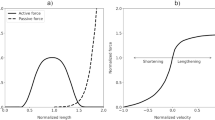Abstract
In an effort to enhance medical decision-making and precision treatment, biomechanical musculoskeletal modeling and computer simulations originating from observations of human movements are being implemented. Such a combination allows for the establishment of cause-and-effect relationships providing a unique, non-invasive method of evaluation into internal joint and muscle force function, as well as athletic performance and neuromuscular coordination. While these are beneficial, current musculoskeletal models lack the ability to give insight into the mechanical stimuli required to prevent physiological deconditioning (i.e., muscle atrophy, bone decalcification, and poor cardiovascular health). This is seen on the International Space Station (ISS) as astronauts still experience deconditioning symptoms even with strict exercise regimes. Therefore, this study overviews the development of a multidimensional surface interpolation, which uses a radial basis function derived from the proper orthogonal decomposition). Inputs to the interpolation scheme are biomechanical responses found by solving an inverse dynamic problem using the ISS’s Advanced Resistive Exercise Device model and simulation within OpenSim. A comparison of 41 lower extremity muscle forces between the interpolation and the static optimization analysis in OpenSim was made. Results highlighted a 1.30% average deviation, with errors concentrated at fluctuating data regions in the minimum force production category. The interpolation scheme shows promise in aiding researchers in the development of an optimized singular exercise movement versus the three exercise machines currently used on the ISS.
Access this chapter
Tax calculation will be finalised at checkout
Purchases are for personal use only
Similar content being viewed by others
References
Trappe, S., et al.: Exercise in space: human skeletal muscle after 6 months aboard the International Space Station. J. Appl. Physiology. 1159–68. https://doi.org/10.1152/japplphysiol.91578.2008. Epub 2009 Jan 15. PMID: 19150852. Author, F., Author, S.: Title of a proceedings paper. In: Editor, F., Editor, S. (eds.) CONFERENCE 2016, LNCS, vol. 9999, pp. 1–13. Springer, Heidelberg (2016)
Genc, K.O., Humphreys, B.T., Cavanagh, P.R.: Enhanced daily load stimulus to bone in spaceflight and on earth. Aviat. Space Environ. Med. 80(11), 919–926 (2009)
Myer, G.D., Ford, K.R., Hewett, T.E.: Rationale and clinical techniques for anterior cruciate ligament injury prevention among female athletes. J. Athl. Train 39(4), 352–364 (2004)
Diaz, A.A., Heldt, T., Young, L.: Cardiovascular responses to artificial gravity combined with exercise. vol. 2015 (2015)
Cavanagh, P.R., et al.: Foot forces during typical days on the international space station. J. Biomech. 43(11), 2182–2188 (2010)
Navasiolava, N., et al.: Vascular and microvascular dysfunction induced by microgravity and its analogs in humans: mechanisms and countermeasures. Front. Physiol. 11, 952 (2020)
Das, A., Khoury, A., Divo, E., Huayamave, V., Ceballos, A., Eaglin, R., et al.: Real-time thermomechanical modeling of PV cell fabrication via a POD-trained RBF interpolation network. Comput. Model. Eng. Sci. 122(3), 757–777 (2020). http://dx.doi.org.ezproxy.libproxy.db.erau.edu/10.32604/cmes.2020.08164
Rogers, C.A., Kassab, A.J., Divo, E.A., Ostrowski, Z., Bialecki, R.A.: An inverse POD-RBF network approach to parameter estimation in mechanics. Inverse Probl. Sci. Eng. 20(5), 749–767 (2012). https://doi.org/10.1080/17415977.2012.693080
Author information
Authors and Affiliations
Corresponding author
Editor information
Editors and Affiliations
Rights and permissions
Copyright information
© 2023 The Author(s), under exclusive license to Springer Nature Switzerland AG
About this paper
Cite this paper
Walck, C., Lamb, C., Vilches, P. (2023). Movement Optimization Through Musculoskeletal Modeling and Multidimensional Surface Interpolation. In: Tavares, J.M.R.S., Bourauel, C., Geris, L., Vander Slote, J. (eds) Computer Methods, Imaging and Visualization in Biomechanics and Biomedical Engineering II. CMBBE 2021. Lecture Notes in Computational Vision and Biomechanics, vol 38. Springer, Cham. https://doi.org/10.1007/978-3-031-10015-4_5
Download citation
DOI: https://doi.org/10.1007/978-3-031-10015-4_5
Published:
Publisher Name: Springer, Cham
Print ISBN: 978-3-031-10014-7
Online ISBN: 978-3-031-10015-4
eBook Packages: EngineeringEngineering (R0)




